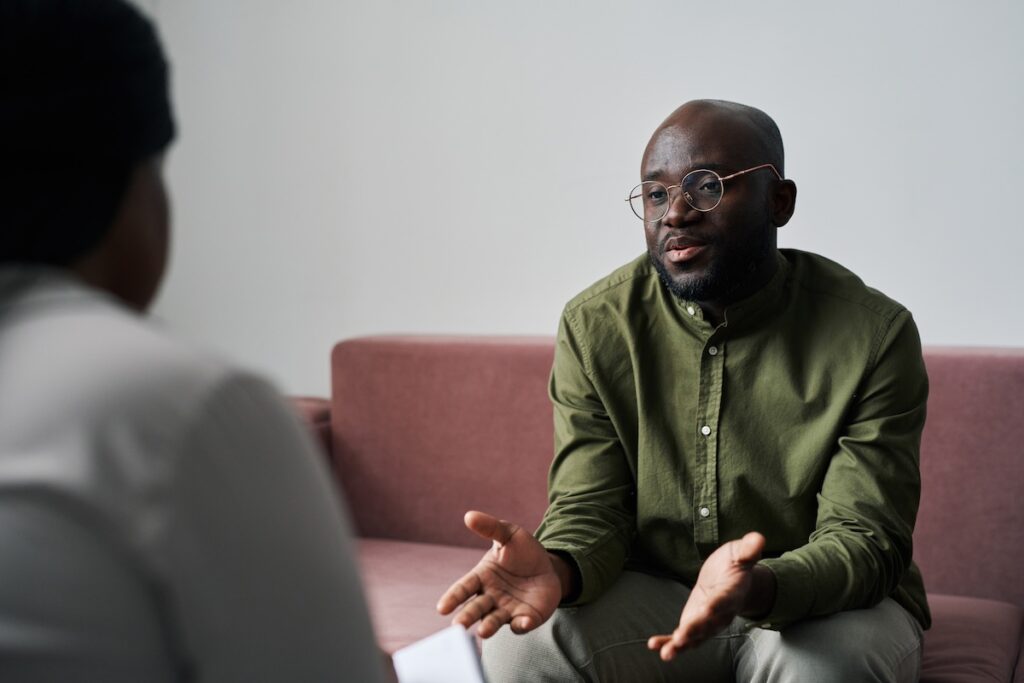
What is Secondary PTSD?
Secondary PTSD, often referred to as vicarious trauma, is a psychological condition that develops in individuals who are exposed to the traumatic experiences of others. Unlike primary PTSD, where individuals directly experience the traumatic event, secondary PTSD arises from witnessing, hearing about, or learning about the traumatic experiences of others. This condition is particularly prevalent among individuals in professions such as healthcare, social work, law enforcement, and emergency services, where they are regularly exposed to the aftermath of trauma.
For example, a healthcare professional who consistently treats patients who have experienced traumatic injuries or illnesses may be at risk of developing secondary PTSD. Similarly, a social worker who works with survivors of abuse or neglect may also be vulnerable to this condition.
Symptoms of Secondary PTSD
The symptoms of secondary PTSD can be highly distressing and significantly impact an individual’s life. While they may mirror those of primary PTSD, it’s important to recognize that they stem from vicarious exposure to trauma.
Intrusive Thoughts
These can manifest as recurring, unwanted thoughts, images, or memories of the traumatic experiences of others. For instance, a nurse caring for a burn victim might have intrusive flashbacks of the patient’s injuries.
Avoidance
Individuals with secondary PTSD may actively avoid situations, people, or places that remind them of the traumatic experiences they have been exposed to. They might withdraw from social interactions, isolate themselves, or become emotionally numb.
Negative Changes in Mood and Cognition
Secondary PTSD can lead to persistent negative thoughts and feelings, such as guilt, shame, hopelessness, and a diminished interest in previously enjoyed activities. For example, a first responder might blame themselves for not being able to prevent or alleviate the suffering of victims.
Hyperarousal
This symptom cluster includes increased irritability, difficulty concentrating, exaggerated startle responses, and sleep disturbances. A social worker who frequently encounters cases of domestic violence might experience heightened anxiety and difficulty relaxing even when off-duty.
The Impact of Secondary PTSD

Living with secondary PTSD can have a profound impact on an individual’s personal and professional life. The emotional toll of vicarious trauma can lead to burnout, strained relationships, and physical health problems. It is crucial to recognize the signs and symptoms of secondary PTSD and seek support to effectively manage this condition.
For instance, a healthcare professional struggling with secondary PTSD might experience difficulty maintaining healthy relationships with family and friends due to emotional exhaustion and withdrawal. Similarly, a social worker might experience physical symptoms such as headaches, fatigue, or digestive issues as a result of prolonged stress.
Coping Strategies for Secondary PTSD
Coping with secondary PTSD is a journey that requires patience, self-compassion, and a combination of strategies tailored to individual needs. While there is no one-size-fits-all approach, several effective coping mechanisms can help manage symptoms and improve overall well-being.
Self-care as a Foundation

Prioritizing physical health through regular exercise, a balanced diet, and sufficient sleep is essential for building resilience. Engaging in mindfulness and relaxation techniques, such as meditation, deep breathing, and yoga, can help regulate emotions and reduce stress. Setting boundaries between work and personal life is crucial to prevent burnout and maintain a healthy work-life balance. Effective time management strategies can also contribute to reducing stress and improving overall well-being.
Building a Support System
Connecting with others who understand the challenges of secondary PTSD is invaluable. Sharing experiences with trusted friends, family, or support groups can provide emotional support and validation. Seeking professional help from therapists specializing in trauma can offer tailored treatment plans and coping strategies. Joining support groups specifically designed for individuals with secondary PTSD can create a sense of community and shared understanding.
Developing Coping Mechanisms
Engaging in enjoyable activities, hobbies, or spending time in nature can provide a much-needed respite from the emotional turmoil. Learning emotional regulation techniques helps individuals identify and manage their emotions effectively. Cognitive restructuring challenges negative thought patterns and replaces them with more positive and realistic perspectives. Grounding techniques, such as focusing on the present moment through sensory experiences, can help alleviate overwhelming feelings.
Enhancing Resilience
Cultivating a strong sense of self-worth and maintaining a positive outlook contributes to overall well-being. Practicing self-compassion involves treating oneself with kindness and understanding, fostering emotional healing. Finding meaning in personal and professional life provides a sense of purpose and motivation. Staying informed about trauma and PTSD through continuous learning empowers individuals to better understand their experiences and develop effective coping strategies.
Seeking Professional Help

If you are struggling with secondary PTSD, seeking professional help is crucial. Therapists specializing in trauma offer evidence-based treatment approaches, such as cognitive-behavioral therapy (CBT) or eye movement desensitization and reprocessing (EMDR), to address the underlying symptoms and promote healing. These therapies can help individuals develop effective coping mechanisms, process traumatic experiences, and reduce the impact of intrusive thoughts and avoidance behaviors.
Remember, healing from secondary PTSD is a journey that requires patience, self-compassion, and a combination of coping strategies. It is essential to find what works best for each individual and to adapt coping mechanisms as needed. Progress may vary, and setbacks are normal. Celebrating milestones and acknowledging achievements is crucial for maintaining motivation and hope throughout the healing process.
Contact me to learn more about how therapy can help Secondary PTSD, or check out this page on Tramau Counseling.
Supporting a Loved One with Secondary PTSD

Supporting a loved one with Secondary PTSD requires patience, empathy, and understanding. It’s essential to remember that their journey is unique, and your role is to provide a supportive and compassionate environment.
Understanding and Empathy
Educate Yourself
Learn about Secondary PTSD to grasp the complexities of your loved one’s experience. This knowledge empowers you to offer more informed support and validate their feelings. For instance, understanding the concept of vicarious trauma can help you appreciate the emotional toll their work has taken on them.
Active Listening
Create a safe space for open communication. Practice active listening by focusing on their words, avoiding distractions, and reflecting back their feelings to show understanding. For example, instead of offering solutions, you might say, “It sounds like you’re feeling overwhelmed by the weight of your patients’ experiences. That must be incredibly tough.”
Validate Their Emotions
Reassure your loved one that their feelings are valid and normal. Avoid minimizing their experiences or comparing them to others. For instance, if they express feeling guilty for not being able to help a patient, you might say, “It’s understandable to feel that way. You’re doing the best you can in a challenging situation.”
Practical Support
Offer Concrete Assistance
Help with daily tasks or responsibilities to lighten their load. This might involve grocery shopping, childcare, or household chores. For example, preparing their favorite meal or running errands can show your support and care.
Encourage Self-Care
Remind them of the importance of self-care and suggest activities that promote relaxation and well-being. This could include going for a walk together, practicing mindfulness, or engaging in hobbies they enjoy.
Foster Social Connections
Encourage them to spend time with supportive friends and family members. Social interaction can provide a sense of belonging and reduce feelings of isolation. Plan group activities or outings to help them reconnect with loved ones.
Managing Your Own Well-Being
Set Boundaries
While supporting your loved one is important, it’s equally crucial to take care of yourself. Establish boundaries to prevent burnout and maintain your own emotional well-being.
Seek Support
Join support groups for caregivers or friends of people with PTSD. Connecting with others who understand your situation can provide valuable support and coping strategies.
Practice Self-Care
Prioritize your physical and mental health through activities like exercise, relaxation techniques, and spending time with loved ones.
Navigating Challenges
Understanding Avoidance Behaviors
If your loved one withdraws socially, be patient and avoid pushing them. Instead, focus on spending quality time together in low-pressure environments.
Coping with Intrusive Thoughts
Validate their experiences and offer reassurance. Encourage them to use grounding techniques or engage in distracting activities during intrusive thoughts.
Managing Flashbacks
If your loved one experiences flashbacks, stay calm and reassure them of their safety. Help them ground themselves in the present moment by focusing on their surroundings.
Remember, healing from Secondary PTSD is a journey, and there may be setbacks. Be patient, supportive, and understanding throughout the process. Celebrate their progress and offer encouragement along the way.